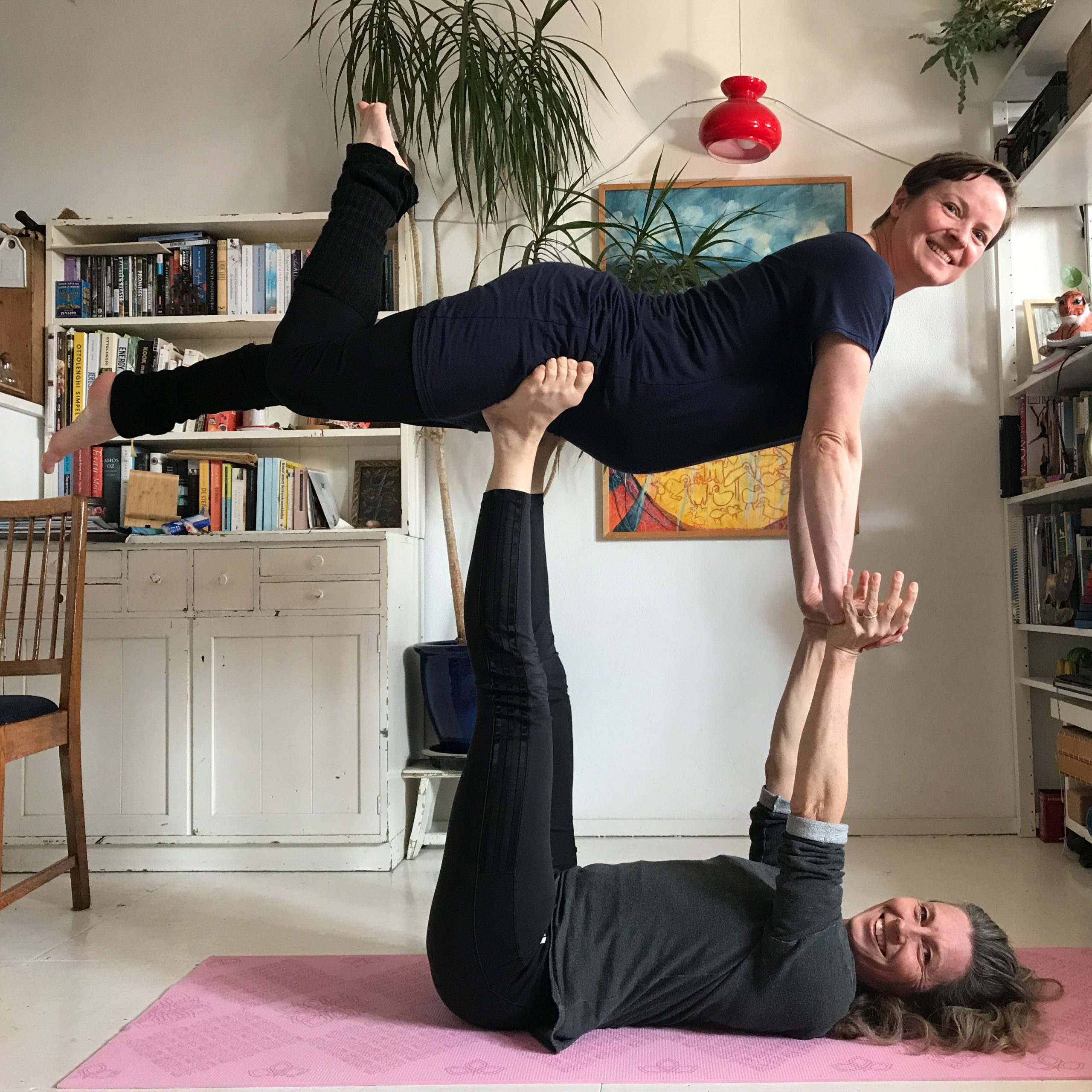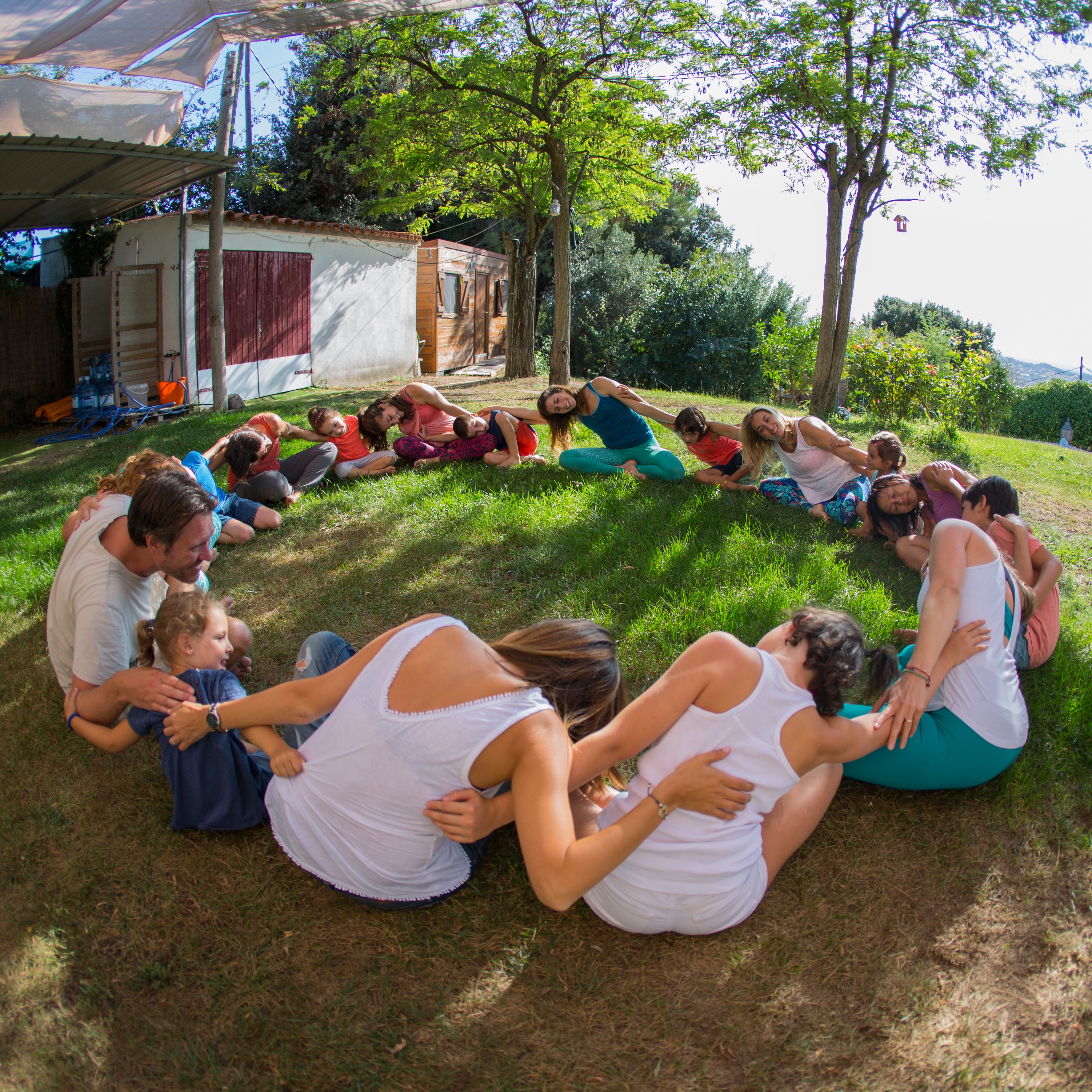NEW STUDY ABOUT ACROYOGA IN LEISURE CENTERS
I am pleased to announce that my study on acroyoga as a pedagogy tool in work with children and youth is finished, and the findings are super inspiring.
“Acroyoga is better than Tivoli! If I feel sad, I can just come here to the club and do acroyoga and I’ll be in a good mood again.” Hannah 4th grade
What did you learn from acroyoga?
Well… I’ve certainly learned to talk to myself better. Amani 11 years old
This report is about how acroyoga can be used as a pedagogical tool in work with children and young people in leisure clubs. The report is based on a practice-oriented development project at FCYN, Fritidscenter Ydre Nørrebro in Denmark. The project has financial support from BUPL’s development pool. Below is the summary, and here is a link to the complete study.
I hope that this report will inspire you to support or work with acroyoga with kids and youth.
Download report: Acroyoga as a pedagogical tool 2022.
Tatjana t’Felt, from Family Acroyoga & Acroyoga4all
SUMMARY AND PERSPECTIVE
Acroyoga is a new method that has great potential to strengthen children’s sense of their own bodies and give them moments of physical immersion. However, it requires that a safe space and opportunity for immersion is established. A 12-week course of Acroyoga in after-school clubs can create a safe space. The interviews show that the children feel that Acroyoga in their club is a safe space where it is okay to fail and try new things that they would not otherwise try.
Acroyoga can contribute to the development of club pedagogy by focusing on physical empowerment in leisure clubs. Acroyoga and the yoga values on which it is based can be used as tools in after-school pedagogy to train children to interact more lovingly and respectfully with each other.
Acroyoga is a living bodily communication where children can experience being met with presence and empathy. Acroyoga as a method can be used to create positive adult contact in leisure education.
The project shows that acroyoga helps to create new friendships between children across schools and ages, can build cohesion between children, and strengthen children’s confidence in themselves and each other. These new friendships can contribute to cohesion in the after-school club. However, an idealized notion of the perfect playmate may emerge. It is therefore important that professionals take the lead in creating an inclusive training community, for example by encouraging all children to train with several children, rather than just one partner.
Some children say they have learned to speak positively to themselves by going to the acroyoga club.
Working with gratitude develops children’s ability to connect and to feel inside. It focuses on positive events and things in the children’s lives.
Acroyoga can give children and young people many personal and shared experiences of success, giving them confidence and trust in each other. Acroyoga can also be used to create flow states and develop children’s creativity.
The project shows that acroyoga is very popular among children. 25% of all children in the club think it is one of the best things about their after-school club.
The interviews show that a 12-week course of acroyoga contributed to the leisure club in relation to three benchmarks of educational quality: the experience of positive adult contact, increased cohesion and language development.
Acroyoga is a way of inviting children and young people into a “red zone experience[1]“. As many acroyoga exercises can seem overwhelming, the child may be convinced that they cannot complete the exercise. However, with the right preparation, and building up exercises and an experienced teacher, children can be successful with these exercises. This can transform and strengthen their self-perception.
The project also shows that acroyoga is a way for children with physical disabilities to find new ways to move. This can contribute to new and strengthened self-perception. Acroyoga is thus a method where these children can become equal to the other children in the leisure club if the professionals manage to create a safe and supportive environment.
There is a lack of support and research on how we can support children with special needs, such as physical disabilities, to practice acroyoga or similar forms of movement in their after-school clubs.
Experimenting with new forms of movement, such as acroyoga, opens up the range of activities available in leisure education.
I hope that this report has inspired you to work with acroyoga in leisure clubs.
[1] It is defined as a child’s preconceived expectation of not being able to handle an arbitrary exercise, and then the subsequent experience of having handled the exercise.



